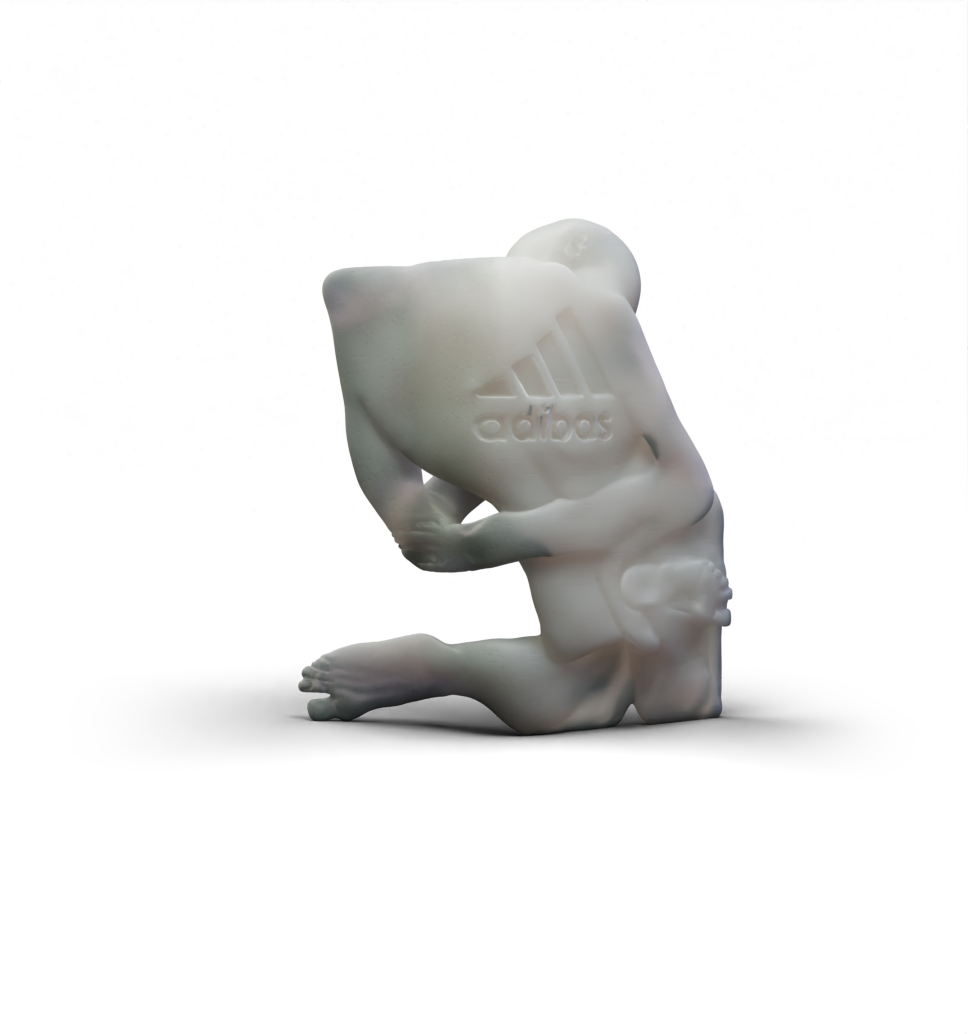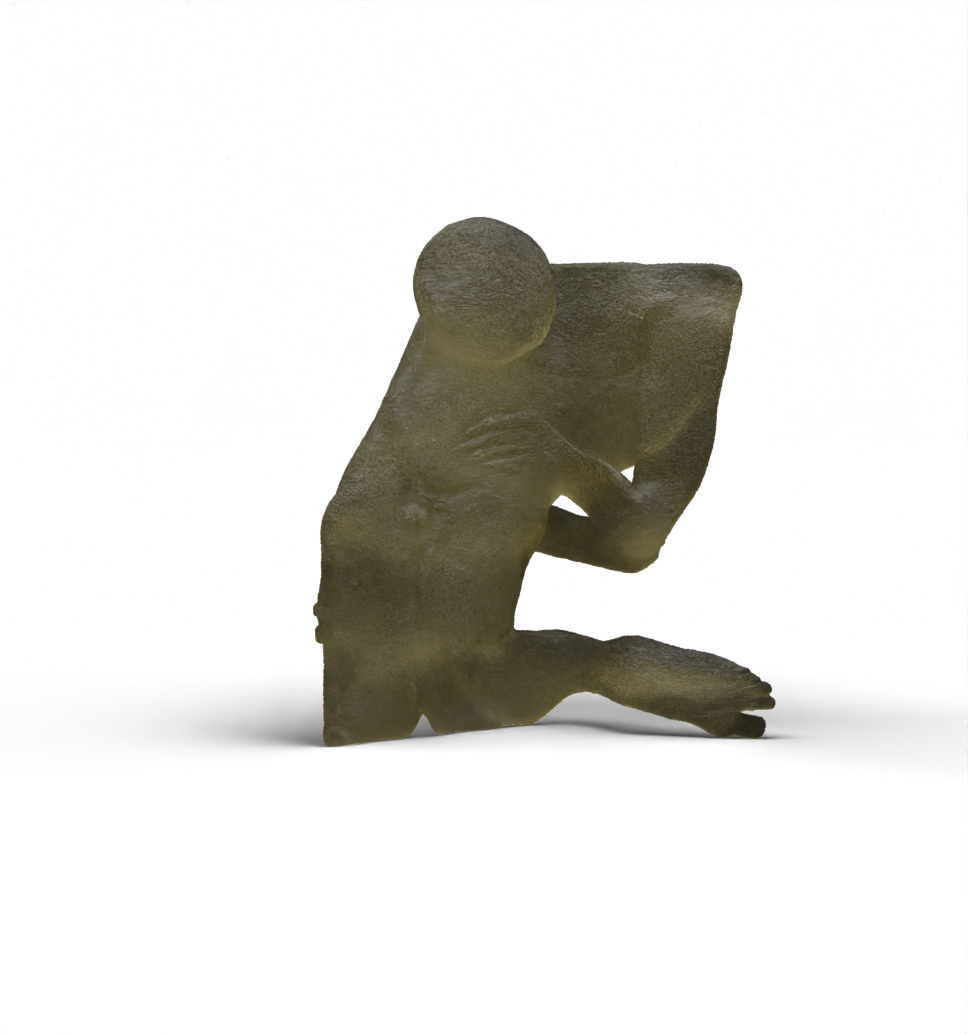


The following project is envisioned more as a future exhibition than a series. The works aim to spark a debate on the concept of originality in art, using the example of serialist production.
Drawing from recent contemporary art practices (e.g., Jeff Koons’s studio and team) and advancements in industrial production methods—particularly the revolution brought about by desktop 3D printers—I seek to challenge the notion of the digital original, art as industry, and the transformative impact of these breakthroughs on art production.
BMW, Audi, and Mercedes in the West versus Trabant in the East). The difference in our case lies in the fact that the dividing wall is not artificial but organic—a Carpathian wall.
As reflected in the work itself, I chose to (re)produce a sculpture in the spirit of appropriation art, borrowing evident formal elements from a series of works by a contemporary artist from Timișoara (Bogdan Rața). I highlighted this appropriation by branding (the term used in English for burning marks onto human skin with a hot iron—a concept well-suited to this context) the sculpture with the logo of a well-known counterfeit brand, ADIBAS, whose visual identity involves minimal modification of the original.
By also questioning the theme of originality in artistic production within a post-structuralist framework, the technology used to create the sculpture Counter-Manufactured in Eastern Romania facilitated its production in the spirit of serialism and the digital object’s condition (as defined by Boris Groys). This resulted in multiple visible copies (of an invisible original: the digital file/object), each nullifying the potential originality of the one next to it—a phenomenon similar to the case of Traffic Light Tree by Pierre Vivant.

The two serial sculptures below serve as an example of the recurring conflicts (and cultural dominance discrepancies) between East and West, viewed through a personal and, implicitly, local lens. Specifically, it is a personal critique of the local art world (Iași). Considering the state of not only contemporary local sculpture but also its display in public and institutional spaces, I reflected on the politicization of the Museum of Contemporary Art (formerly the Turkish Bath). After the aforementioned museum was placed under the supervision of an institution with a different profile, the same institution re-inaugurated the space (the original inauguration took place during Iași’s White Night of Galleries and was organized by professionals: university professors, curators, gallerists, etc.) with a marathon exhibition.
Returning to the work, I examined Romania’s east-west extremes in terms of cultural production, inviting this recurring conflict into focus. This can be seen not only in cultural outputs but also historically, as with East and West Germany during the Cold War (e.g., car production:

as exhibited in Superfictious, Supertheoretical, Superboring
COMING SOON!
COMING SOON!
COMING SOON!
COMING SOON!
COMING SOON!